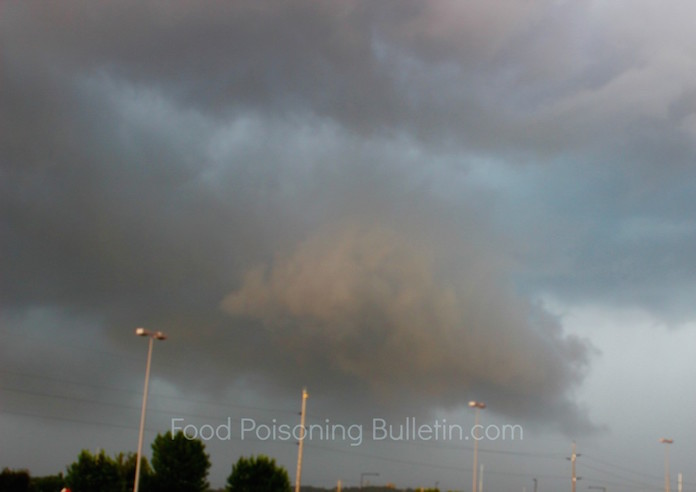As the U.S. enters the hurricane and tornado season, the FDA is offering tips for helping consumers prepare for food safety during power outages. Food can spoil if the power is out for hours, but you can save money and protect yourself by following these steps.

First, make sure that you have appliance thermometers in your refrigerator and freezer. That’s the best way to tell if the temperature in those appliances is cold enough to keep food safe from bacterial growth. The freezer should always be at 0°F or below, and the refrigerator should always be at or below 40°F.
Then, think about freezing containers of water to help keep foods cold in the freezer, refrigerator, or coolers when the power goes out. The melting ice will also provide drinking water if you use water from the tap.
Group food together in the freezer. A full freezer will keep food frozen longer than a partially filled freezer. A full freezer, if unopened, should keep food frozen for 48 hours, but will keep food frozen for only 24 hours if half full.
The refrigerator will keep food safe for just four hours if the power goes off, if the door isn’t opened during that time. Have coolers on hand to keep refrigerated food cold if the power will be off for more than 4 hours.Purchase or freeze ice cubes in advance, and freeze gel packs ahead of time.
Store food on shelves that will be out of the way in case the severe weather brings flooding. And make sure you have a supply of bottled water on hand, stored above potential flood waters.
Dry ice or block ice can keep foods in both appliances as cold as possible. Fifty pounds of dry ice should keep an 18 cubic foot, fully stocked freezer cold for two days.
And if you are going to cook refrigerated or frozen foods, remember that they must be cooked to a safe minimum internal temperature. But, if at any point the food was above 40°F for 2 hours or more (1 hour if the air temperature is above 90°F), discard it. There may be bacteria in the food that has produced toxins that heat won’t destroy.
Once your power is back on, check the temperature in the freezer and fridge. If the freezer thermometer is at 40°F or below, the food is safe and may be refrozen. If the food still contains ice crystals, it’s safe to refreeze or cook.
Discard any perishable food that has been at fridge temperatures above 40°F for 4 hours or more. These foods can cause illness if eaten, even when they are thoroughly cooked.
With these tips for food safety during power outages from the FDA, you can protect your family and stay safe.




